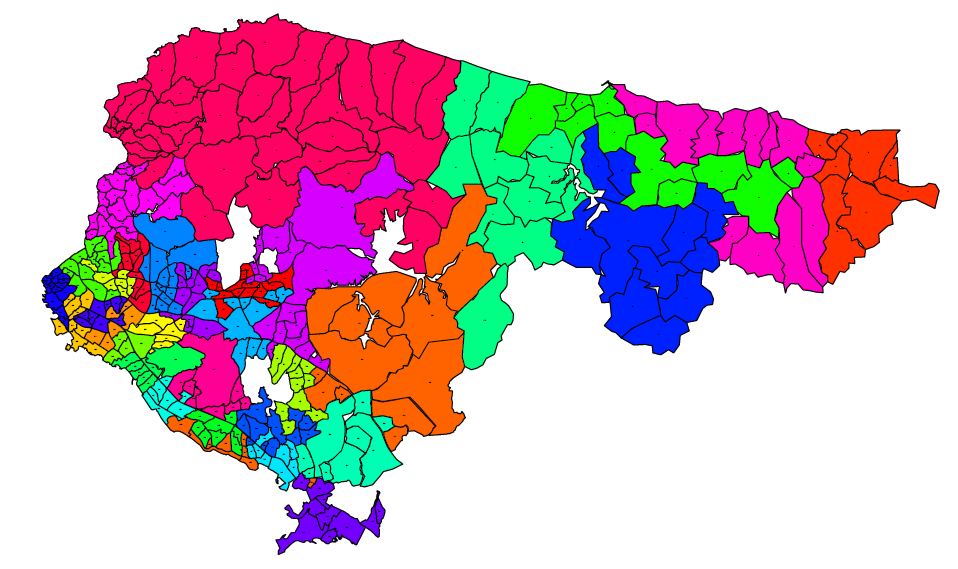This codebase covers the required codes that have been used in my master of science thesis. The problem we worked on is known as political districting in the literature. A detailed explanation of the problem can be found under the "Thesis" folder above.
Most of the functions used in the algorithm can be found in "TabuFunctions.R" file. Some of the files are for the visualization of the solutions.
A three-step initialization approach to have the required initial solutions efficiently has been developed. At the first step, a random unit is chosen as the seed of the district and extended this district by adjoining to seed one of its adjacent units. The district is complete whenever its population attains the average population value or when no adjacent units are available. There are 3 possible cases after assigning all the existing units. The total number of districts can be lower than the desired value, equal to the value or greater than the value. If the number of districts is lower than the desired value, the algorithm gradually increases it by iteratively splitting the most populated district into two, while preserving contiguity. If the number of districts is greater than the desired value, which happens almost all the time, the algorithm reduces it by iteratively merging the least populated district with its least populated neighbor.
After these two steps, one more step is added to the initialization procedure to have feasible solutions. Population equality constraint cannot be achieved after the first two steps. In order to satisfy this equality, a unit which is in a highly- populated district is assigned to a district which is neighbor and least populated. We are trying to minimize the variance of population values of all districts by using the third initialization step.
2 different neighborhood structures are utilized in the algorithm. All changes are between two neighboor districts. In the first one, one of the adjacent units between two districts is assigned to the neighbor district. The structure is shown below. There are 2 adjacent districts that are colorized by black and gray. In the second picture the unit number 6 is assigned to the gray district and unit number 2 is assigned to the black district in the third figure.
Another neighborhood is swap-based. One each unit from two districts are assigned to the opposite districts. For example unit number 6 and 12 are swapped and shown below. As might be expected, some of changes are infeasible solutions. One of infeasible changes is shown in the last picture below. In the algorithm, a contiguity control approach is used to eliminate these infeasible moves.




